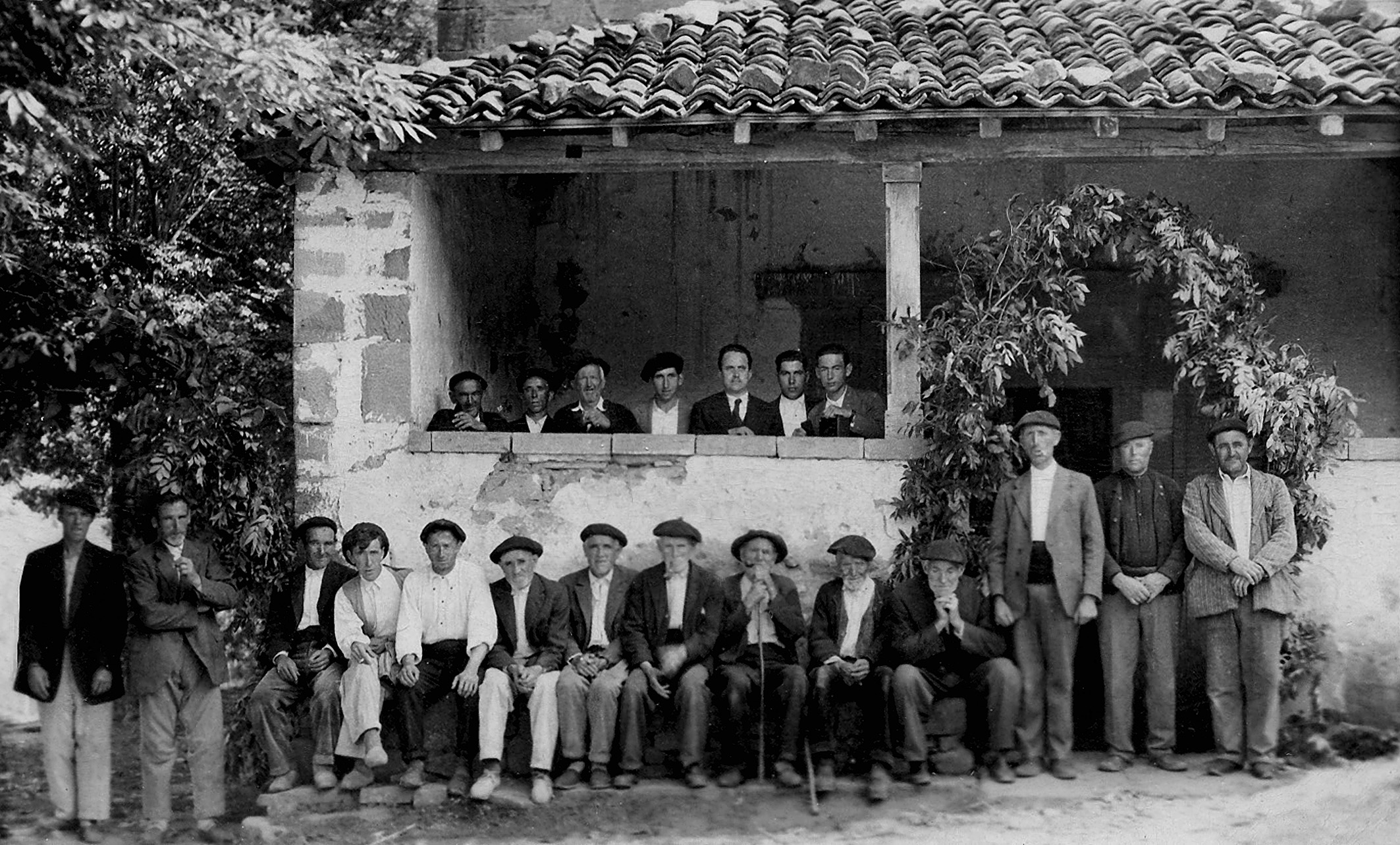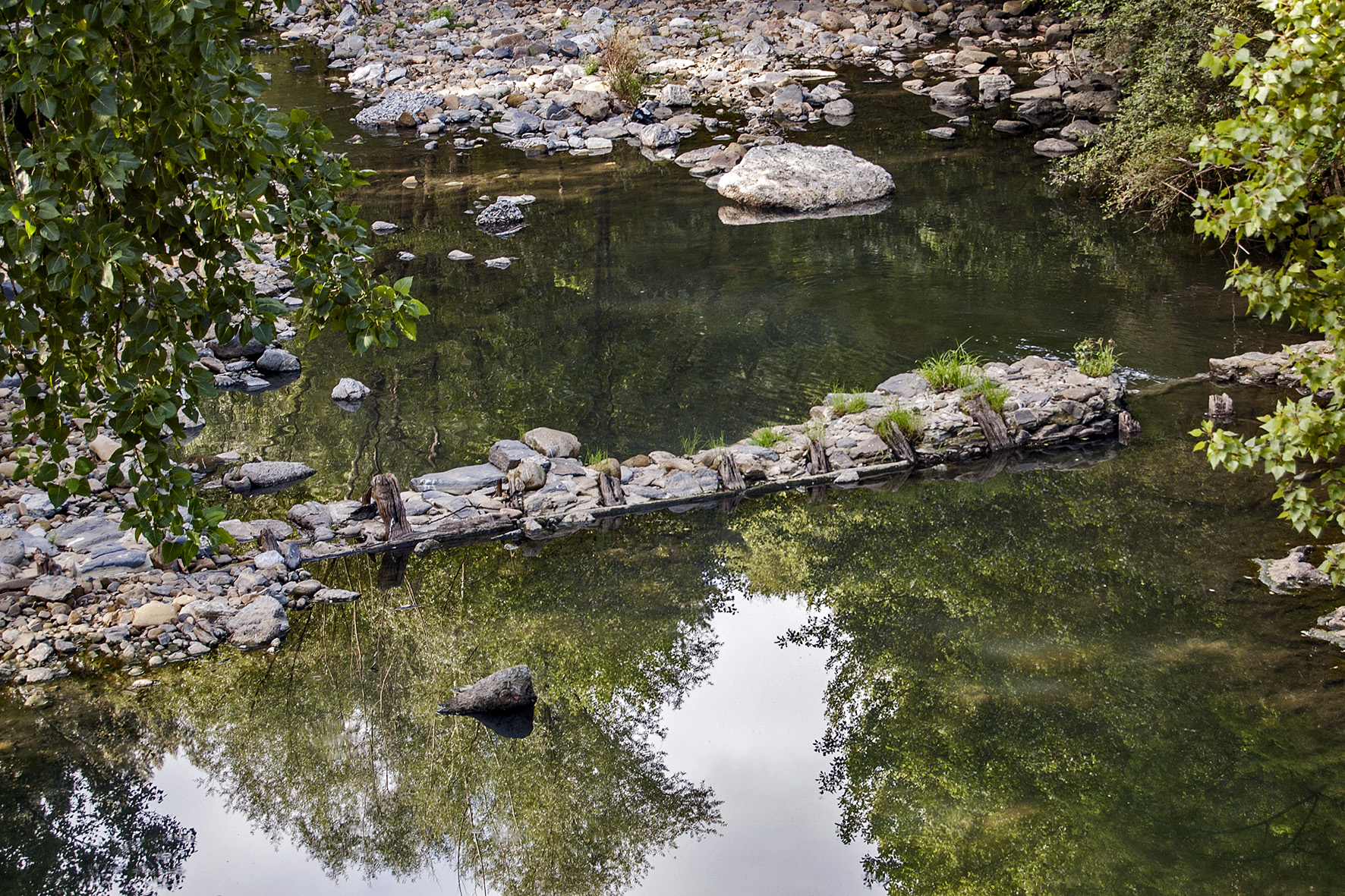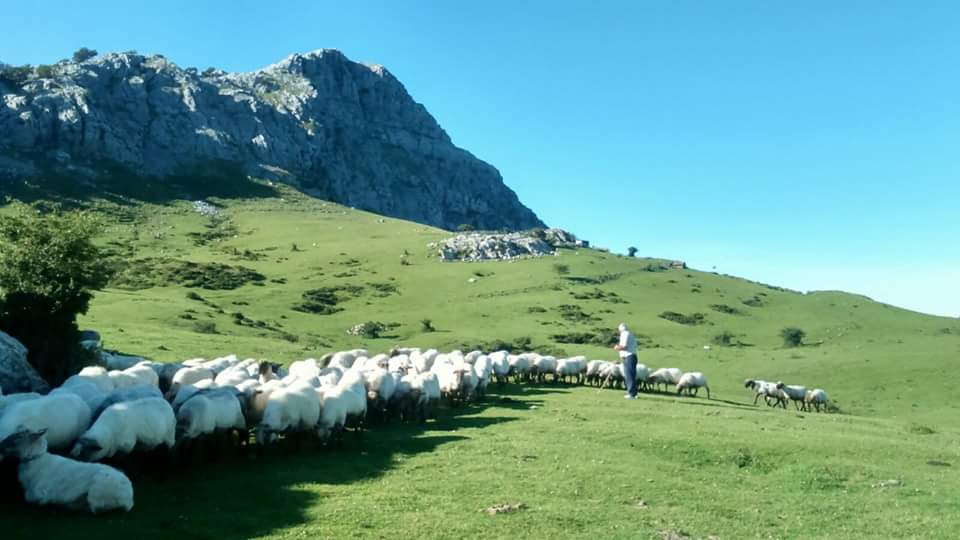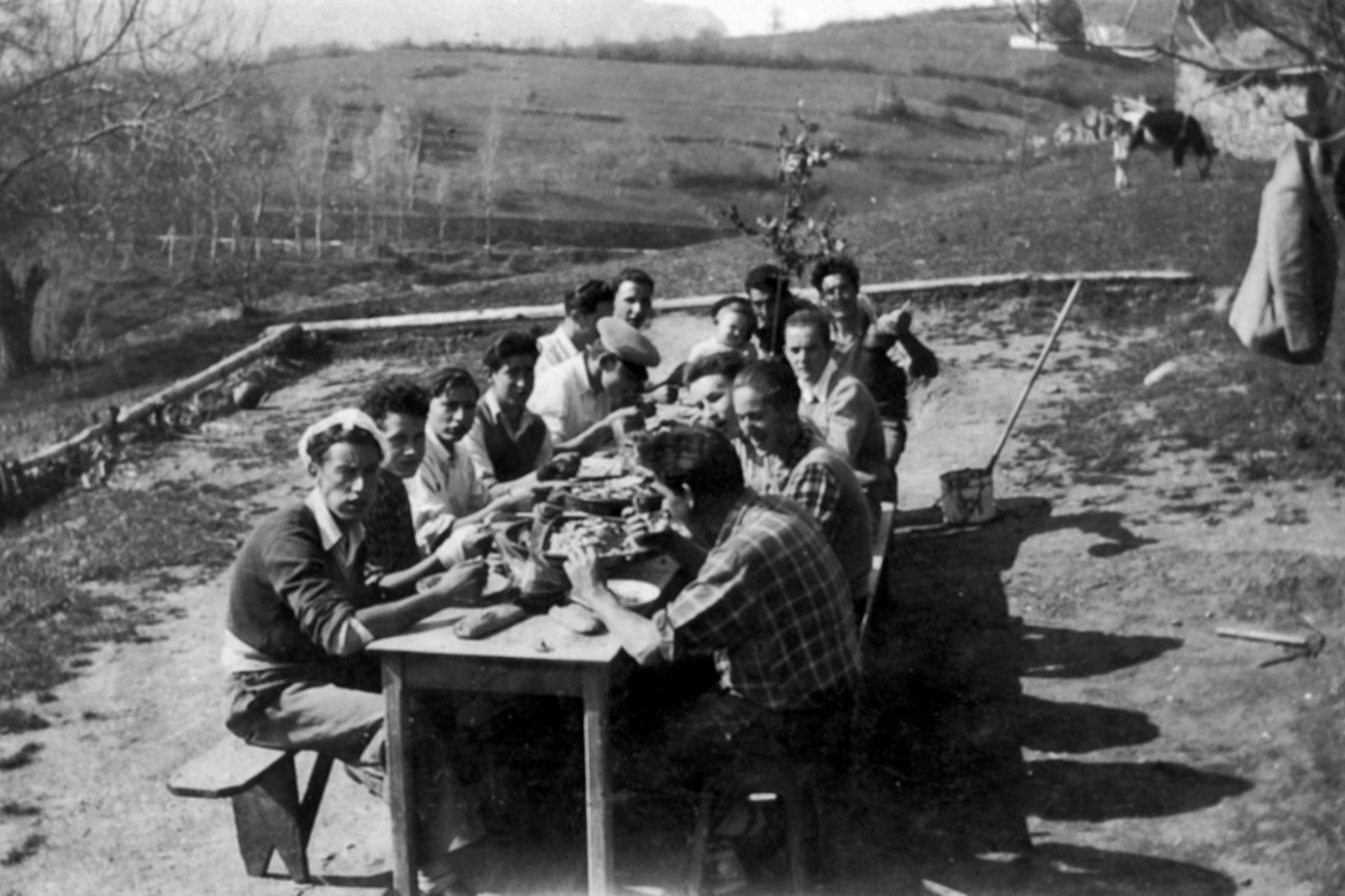Archives

Neighbours of Lanzas Agudas, 1934. Courtesy of Miguel Sabino Díaz.
The population of the Valley of Carranza consolidated in the Middle Ages with the formation of primitive councils, so-called concejos, and the government of the republic of Carranza was decided through council meetings. Until 1740, year in which the Valley Assembly House was built in the neighbourhood of Concha, weather permitting, general assemblies were held under a holm oak planted before St Mary’s Church in Soscaño, where the account books were kept. (more…)

Vestiges of the dam at Vicario Mill in the neighbourhood of Molinar, 1978. Miguel Sabino Díaz.
Heavy rainfall caused a great deal of destruction in the Valley of Carranza (Bizkaia) back in 1978 and revealed the remains of ancient timber dams, which allowed to know in situ the technique used in the construction of these old-time hydraulic structures of clear medieval origin.
Well into the 19th century the majority of the watermills in the Valley employed small, straight single-walled dams to provide power to the water-raising machinery. (more…)

Fields of Arraba. Mount Gorbeia, 2016. Gorane Etxebarria. Labayru Fundazioa Photographic Archive.
The Valley of Carranza is a large municipality in Bizkaia where cattle farming and milk production have acquired such paramount importance as to become its major sign of identity. However, the inhabitants of the valley devoted themselves to shepherding before they turned into cow’s milk producers. Shepherding gradually lost relevance throughout the 20th century, and it is only in recent years, coinciding with the crisis besetting livestock farming, that we notice a rebound in the number of small flocks of sheep grazing the meadows dairy herds frequented in the old days, primarily to keep the pastures ‘clean’ and provide meat and a few cheeses for domestic consumption. (more…)

Group of lads from Biáñez Council celebrating a banquet, 1947. Julián Ahedo.
The Marzas or songs sung to welcome in the spring had in times past a strong root in the Carranza Valley. It is a pagan festival whose origins date back to time immemorial and which Julio Caro Baroja related to the beginning of the Roman year. Traditionally, on 1 March young male singers, called marceros, gathered in groups of four to eight sang the Marzas house to house and neighbourhood to neighbourhood. Dressed in daily clothes, they made their way to the sound of cowbells and bell collars. Along with them walked the zarramasquero, responsible for carrying the zarramasco, a holly branch decorated with coloured paper strips. He stood out from his fellow singers by two crossed sheep manes he wore on his chest and back held with bell straps and several cowbells at the waist that sounded as he jumped during the singing. Occasionally his face was covered with a mask made of animal skin. (more…)

